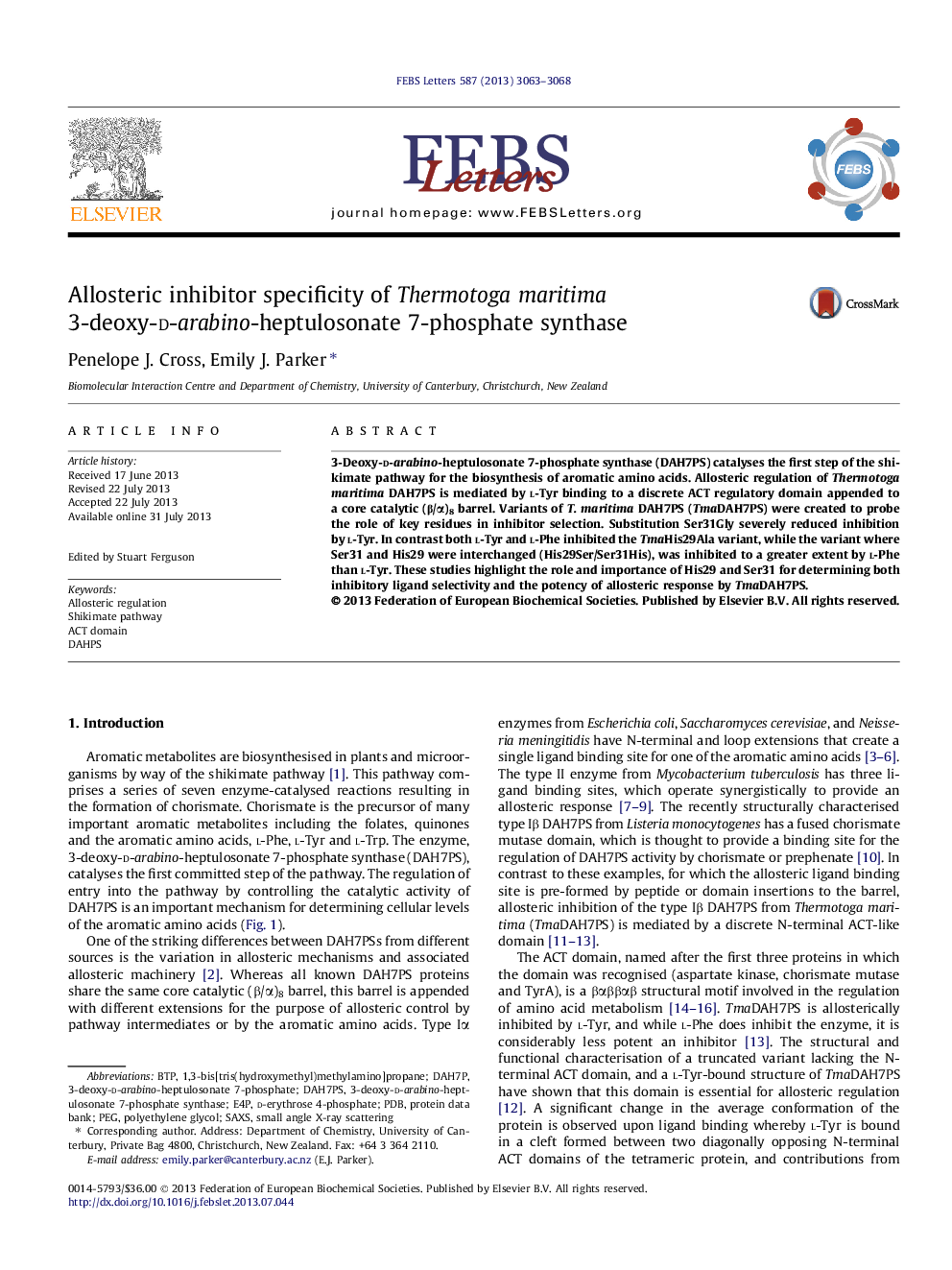| Article ID | Journal | Published Year | Pages | File Type |
|---|---|---|---|---|
| 10870790 | FEBS Letters | 2013 | 6 Pages |
Abstract
3-Deoxy-d-arabino-heptulosonate 7-phosphate synthase (DAH7PS) catalyses the first step of the shikimate pathway for the biosynthesis of aromatic amino acids. Allosteric regulation of Thermotoga maritima DAH7PS is mediated by l-Tyr binding to a discrete ACT regulatory domain appended to a core catalytic (β/α)8 barrel. Variants of T. maritima DAH7PS (TmaDAH7PS) were created to probe the role of key residues in inhibitor selection. Substitution Ser31Gly severely reduced inhibition by l-Tyr. In contrast both l-Tyr and l-Phe inhibited the TmaHis29Ala variant, while the variant where Ser31 and His29 were interchanged (His29Ser/Ser31His), was inhibited to a greater extent by l-Phe than l-Tyr. These studies highlight the role and importance of His29 and Ser31 for determining both inhibitory ligand selectivity and the potency of allosteric response by TmaDAH7PS.
Keywords
ACT domaind-erythrose 4-phosphate3-deoxy-d-arabino-heptulosonate 7-phosphate synthase1,3-Bis[tris(hydroxymethyl)methylamino]propaneDAHPSSAXS3-Deoxy-d-arabino-heptulosonate 7-phosphateE4PDAH7PSBTPPDBShikimate pathwayAllosteric regulationsmall angle X-ray ScatteringProtein Data Bankpolyethylene glycolPEG
Related Topics
Life Sciences
Agricultural and Biological Sciences
Plant Science
Authors
Penelope J. Cross, Emily J. Parker,
